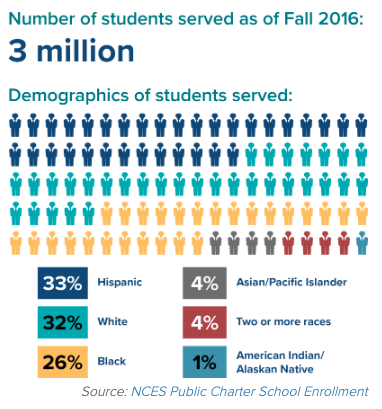Biden admin new guidance would harm charter schools
The Biden administration’s U.S. Department of Education has proposed 13 pages of new rules that would hurt the charter school community.

The 28-year-old federal Charter Schools Program provides funds to create “promising new public charter schools, replicate high-quality public charter schools, and disseminate information about effective practices within charter schools.” Funds are also available to “reward high-quality charter schools that form exemplary collaborations with traditional public schools.” This financial assistance is currently available through a variety of competitive grants. CSP is part of the Every Student Succeeds Act, which was signed into law by Pres. Barack Obama in 2015, and was first established in 1994 under Pres. Bill Clinton.
Now is not the time to make it harder for communities most in need to serve their students
The Biden administration’s proposed regulations would create roadblocks that would make the CSP funds hard to access and could make expansion more difficult. “Currently, two million U.S. parents would like to send their child to a charter school but can’t because of either a lack of school options or too few seats available at open schools. Starting a new high-quality school takes considerable time, planning, and resources, and CSP funds are critical to this process,” writes the National Association for Public Charter Schools.
Under the new rules, charters would be mandated to partner with districts in order to receive priority points and funding in state competitions. But there is no corresponding obligation or expectation that district schools invite, pursue, or be open to such cooperative arrangements. Even if the charter is willing to build a partnership. This would shift the power of a community’s educational choices back to the districts that families opted out of to begin with.
Additionally, the changes would work against charters serving students in urban communities and communities of color, as the proposed rules would require charters to be “racially and socio-economically diverse” — regardless of community needs. No definition of diversity is included in the proposed language.
According to the department, roughly 53 percent of existing charter schools have been helped by the program, reports The 74.
Why is Washington targeting schools that more families than ever are turning to?
During the pandemic, hundreds of charter schools shifted to remote learning faster and more successfully than district schools.
Charter school enrollment nationwide jumped 7 percent last school year — which is their largest growth in six years, continues The 74. Minnesota charter schools have also experienced growth, while enrollment numbers in the state’s traditional K-12 schools continue to drop. Top-performing high schools in Minnesota consistently include charter schools.
Despite the interest among families, their academic success, and even a history of bipartisan support, charter schools are being targeted by Washington because teachers’ unions have wanted them defunded for years. Then Democratic presidential nominee Joe Biden told former National Education Association president Lily Eskelsen Garcia in Sept. 2020 that he shared the union’s “feelings” on the schools. It would appear he is now acting on those feelings.
Reportedly, key stakeholders were not consulted in the drafting of the proposed changes, and the public comment period is a significantly narrower window than what is typically the norm before rules become final.
Proposed policy changes should prioritize students, not systems, and the proposals at hand fall short of this.
_______________
Comments on the proposed rule changes can be submitted here until April 18.